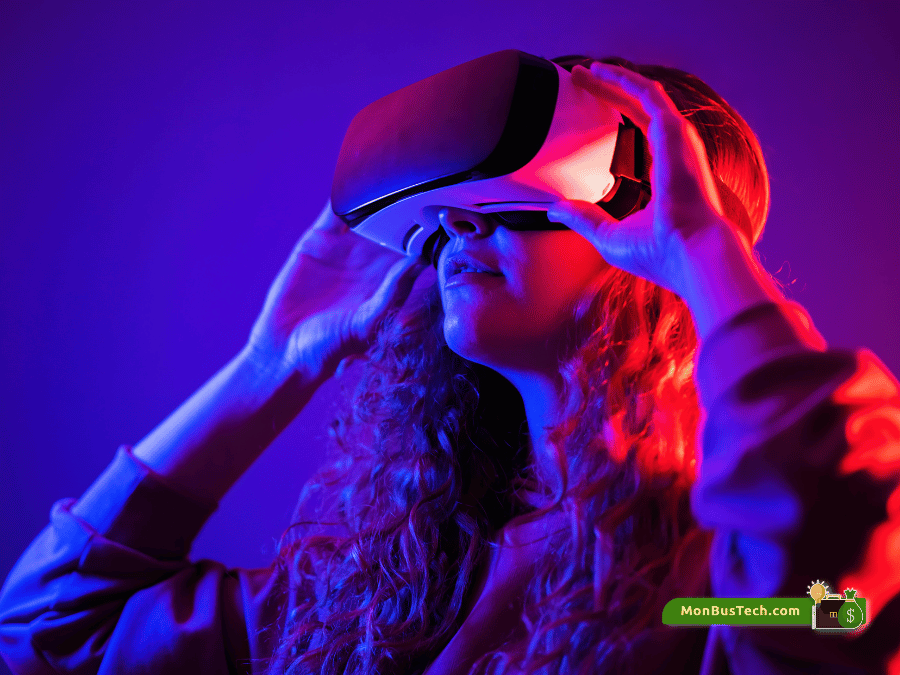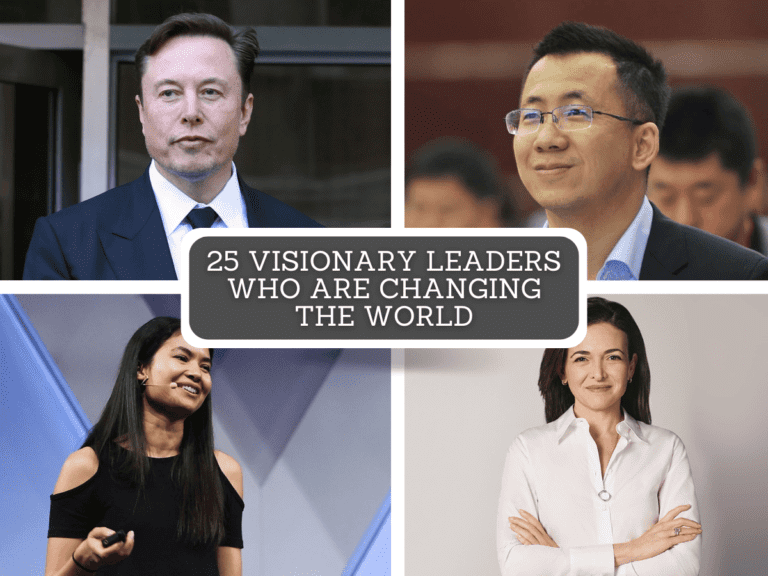Tech Trends to Watch: 5 Innovations That Will Disrupt Every Industry .
As we advance further into the 21st century, the pace of technological innovation continues to accelerate, transforming industries at a breathtaking speed. From artificial intelligence to blockchain, emerging technologies are not only revolutionizing businesses but also reshaping the global economy. Here are five groundbreaking tech trends that promise to disrupt every industry in 2024 and beyond.

1. Artificial Intelligence and Machine Learning: Redefining Automation
AI: The New Industrial Revolution
Artificial Intelligence (AI) and Machine Learning (ML) are no longer the stuff of science fiction. They are here, and they are transforming industries by automating complex tasks, enhancing decision-making processes, and personalizing customer experiences.
Business Implications
- Enhanced Decision-Making: AI algorithms can analyze vast amounts of data to provide insights that were previously unattainable. Businesses can make more informed decisions, improving efficiency and profitability.
- Automation of Routine Tasks: From chatbots handling customer service inquiries to robots managing warehouse logistics, AI-powered automation is streamlining operations across sectors. This shift not only reduces costs but also allows human workers to focus on more strategic tasks.
- Personalized Customer Experiences: AI enables businesses to deliver highly personalized experiences to their customers. For example, recommendation engines on e-commerce platforms can suggest products tailored to individual preferences, boosting sales and customer satisfaction.
Industry Applications and Examples
- Healthcare: AI is revolutionizing diagnostics, enabling early detection of diseases through predictive analytics and imaging technology. Example: IBM Watson Health.
- Finance: Automated trading systems and fraud detection algorithms are enhancing security and efficiency in the financial sector. Example: JPMorgan Chase’s COiN platform.
- Retail: AI-powered inventory management systems ensure that stock levels are optimized, reducing waste and improving profitability. Example: Amazon’s AI-driven recommendation engine.
2. Blockchain Technology: Beyond Cryptocurrencies
Decentralization and Security
While blockchain technology is often associated with cryptocurrencies like Bitcoin, its potential applications extend far beyond digital currencies. At its core, blockchain is a decentralized ledger that ensures data integrity and security, making it ideal for various applications across industries.
Business Implications
- Enhanced Security: Blockchain’s decentralized nature makes it highly secure and resistant to hacking. This makes it ideal for industries that handle sensitive data, such as finance, healthcare, and supply chain management.
- Transparency and Traceability: Blockchain allows for transparent tracking of transactions and goods. This can reduce fraud, improve accountability, and enhance trust among stakeholders.
- Smart Contracts: These self-executing contracts with the terms of the agreement directly written into code can automate and streamline complex processes, reducing the need for intermediaries and lowering costs.
Industry Applications and Examples
- Supply Chain Management: Blockchain ensures the traceability of products from origin to consumer, enhancing transparency and reducing fraud. Example: IBM Food Trust.
- Healthcare: Securely sharing patient records across providers, improving collaboration, and ensuring patient privacy. Example: MedicalChain.
- Finance: Facilitating faster, cheaper, and more secure cross-border transactions. Example: Ripple’s XRP.
3. Internet of Things (IoT): Connecting the World
Smart Connectivity
The Internet of Things (IoT) refers to the network of interconnected devices that communicate and exchange data. From smart home appliances to industrial sensors, IoT is creating a connected world that offers unprecedented levels of convenience, efficiency, and data-driven insights.
Business Implications
- Data-Driven Insights: IoT devices generate vast amounts of data that can be analyzed to gain valuable insights into consumer behavior, operational efficiency, and more.
- Operational Efficiency: IoT can optimize processes by providing real-time monitoring and control of equipment and systems. This can lead to significant cost savings and productivity improvements.
- Enhanced Customer Experience: Smart devices can offer personalized experiences based on user data. For instance, smart thermostats can learn a user’s preferences and adjust settings automatically for maximum comfort.
Industry Applications and Examples
- Manufacturing: IoT-enabled predictive maintenance can prevent equipment failures and reduce downtime. Example: GE’s Predix platform.
- Healthcare: Wearable devices monitor patient health in real-time, providing data that can be used for proactive care. Example: Fitbit.
- Retail: Smart shelves and inventory systems track stock levels and automatically reorder products, ensuring shelves are always stocked. Example: Walmart’s use of IoT for inventory management.
4. Quantum Computing: The Next Frontier
Unprecedented Computing Power
Quantum computing is poised to revolutionize industries by providing computational power far beyond the capabilities of classical computers. By leveraging the principles of quantum mechanics, these computers can solve complex problems that are currently unsolvable.
Business Implications
- Accelerated Innovation: Quantum computing can dramatically speed up research and development processes in fields like pharmaceuticals, materials science, and cryptography.
- Optimized Solutions: Businesses can find optimal solutions to complex problems, such as supply chain optimization and financial modeling, much faster than with classical computers.
- Enhanced Security: Quantum encryption offers a level of security that is currently unbreakable, safeguarding sensitive information against cyber threats.
Industry Applications and Examples
- Pharmaceuticals: Accelerating drug discovery by simulating molecular interactions at an unprecedented scale. Example: IBM Q Network.
- Finance: Optimizing trading strategies and risk management through advanced computational models. Example: Quantum computing projects by Goldman Sachs.
- Transportation: Enhancing traffic management and route optimization for logistics companies. Example: Volkswagen’s use of quantum computing for traffic flow optimization.
5. Extended Reality (XR): Transforming Interaction
Blurring the Lines Between Physical and Digital
Extended Reality (XR) encompasses Virtual Reality (VR), Augmented Reality (AR), and Mixed Reality (MR). These technologies are transforming the way we interact with the digital world by creating immersive experiences that blend physical and digital environments.
Business Implications
- Immersive Training and Education: XR provides realistic simulations for training purposes, enhancing learning outcomes and reducing training costs.
- Enhanced Customer Engagement: Businesses can create immersive marketing experiences, allowing customers to interact with products in a virtual environment before making a purchase.
- Remote Collaboration: XR facilitates remote collaboration by creating virtual meeting spaces where team members can interact as if they were in the same room.
Industry Applications and Examples
- Healthcare: VR simulations for surgical training and AR-assisted surgeries improve precision and outcomes. Example: Osso VR.
- Real Estate: Virtual property tours allow potential buyers to explore properties without being physically present. Example: Matterport.
- Retail: AR apps enable customers to visualize how products will look in their homes before purchasing. Example: IKEA Place.
Conclusion
The rapid advancement of these technologies promises to reshape industries in ways that were previously unimaginable. As businesses adapt to these innovations, they will not only enhance their operational efficiency but also create new opportunities for growth and competitiveness. Staying ahead of these tech trends will be crucial for any organization looking to thrive in the future. Embrace the change, leverage the potential, and prepare for a future where technology drives every aspect of business and life.









